Speedland Goes Road. RX:FPY Review.
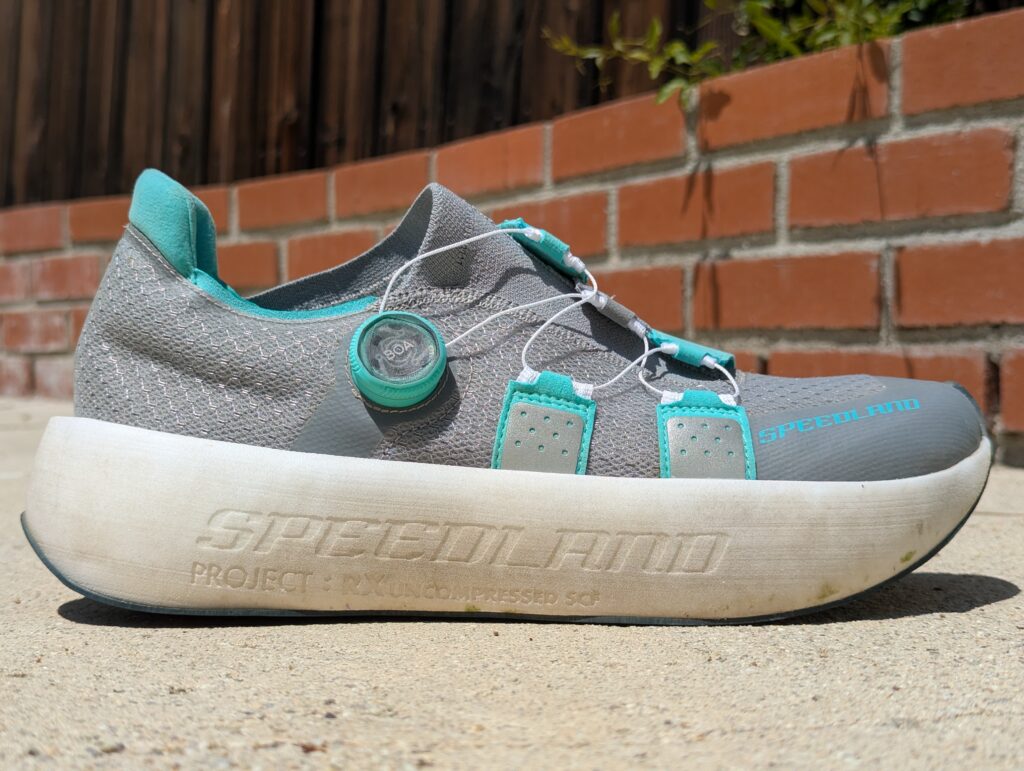
When I first discovered Speedland’s GS:TAMs in the summer of 2023, one of my first thoughts was that a road version of that shoe might be the perfect Ironman marathon shoe. It had all the performance of a modern super shoe with ultra bouncy PEBA foam and a (uniquely removable) carbon plate. In addition to the removable plate, the GS also had some other unique features that I thought made it particularly suited to ultra distance triathlon. The BOA dials made it fast to adjust tension quickly, a real bonus when dealing with swelling feet. And the seamless upper and roomy toebox are great for preventing hotspots. But the real feature that I thought made it so ideal is its “in” the midsole foot placement rather than “on top” of the midsole. I first experienced this on the original Hoka Bondi B, but Hoka has largely abandoned this approach to shoe design over the years. Lamentably. This was, in my opinion, the most important aspect of those early Hokas and how, in spite of being such high stack shoes, they were so stable. Because the foot is really cradled by the upper and supported by a lot more of the midsole than in most modern shoes where you really are reliant solely on the upper for lateral support rather than the midsole. Speedland achieves this in part by making the removable sock liner a key part of the shoe. A lot of the foam in the midsole is in the sockliner, which also serves to hold the removable carbon plate. As I said in the review of the GS, this does mean you can’t use orthotics with Speedland shoes, but this is a conscious decision on their part and an accepted limitation.
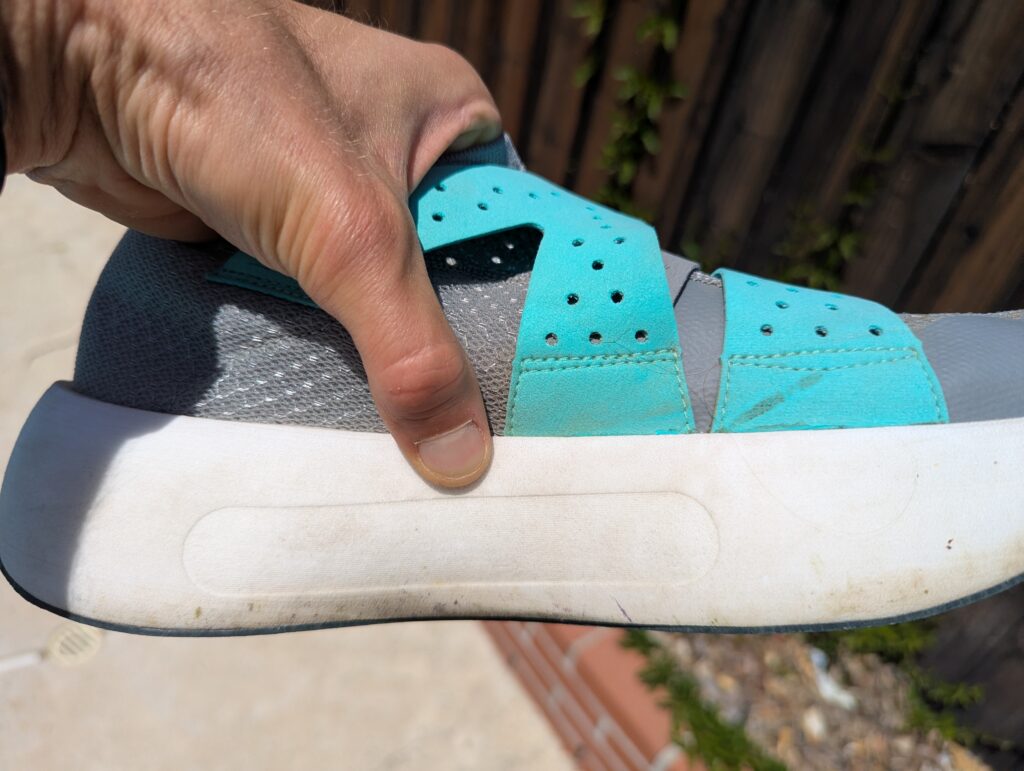
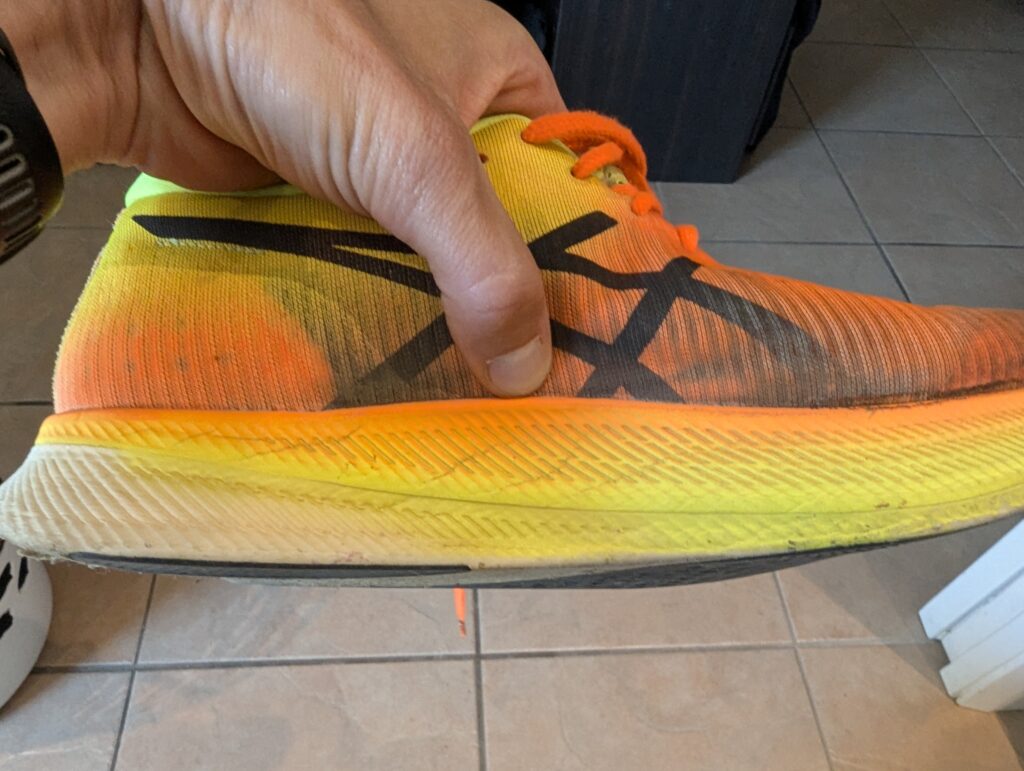
What I thought I wanted was just a GS but with a road tread instead of the lugged outsole. What Speedland has delivered almost two years later in the RX is something quite different than what I expected. The biggest change from the GS is the midsole, which is uncompressed foam – it’s just a giant slab of foam that’s shaved and shaped into final form – rather than the compressed foam (looks like styrofoam) in the GS. This makes the RX a lot lighter – at just over 8oz for US9, it’s over 20% lighter than the GS. The shape of the midsole also gives up some width in the forefoot, because forefoot width matters less for stability on the road than on the trail.
While there’s certainly a lot more competition for truly great “hyperperformance” road super shoes than they was (and is) for trail shoes, Speedland typically knocked it out of the park here, In particular for ultra distance racing. I compared this to my current personal favorite super shoe, the Asics MetaSpeed Sky. I haven’t run in a ton of supershoes, but the Speedland feels most similar to the NB FuelCell, at least an earlier version as I’ve not run in their current V4. It’s more on the plush side of the supershoe spectrum, though the removable plate – and the ability to use either the new-for-this-shoe road plate or the existing Carbitex offroad plate really give it a character all its own. And the stable, surefootedness of the shoe is uniquely Speedland. This is a shoe that gets better as the distance and time go up – way up. It’s fast. But in a way that just allows you to keep taking good steps.
Outsole
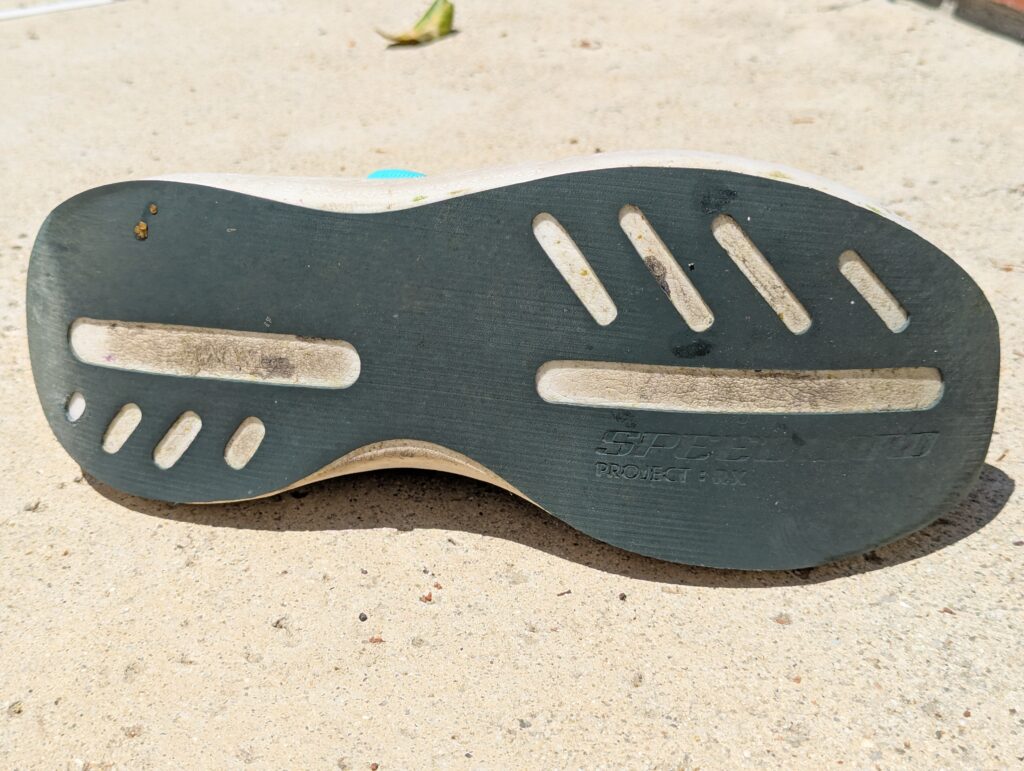
Unlike with the GS, Speedland doesn’t advertise their partners on the RX, except for BOA. With the GS, the outsole is by Michelin and the plate is by Carbitex. On the RX, everything is either Speedland branded or unbranded. The completely smooth outsole looks a lot like the Adidas rubber sourced from Continental, except it’s not black. I found the outsole to be extremely durable, which is, I think, a benefit of the non-treaded designs. Treaded designs seem to wear a bit less evenly, and – fundamentally – just have less rubber because of the texturing of the tread. While I didn’t get to test wet weather performance in any meaningful way, I did find the tread was extremely grippy across pretty much any conditions, including some modest dirt. Adidas makes a wager with its Contintental rubber, as with bike tires, that tread on the road doesn’t actually provide much grip; it’s asphalt that provides the grip. And that rubber compound matters much more than tread design. I concur. That this also helps with durability is a bonus. Better gripping rubber that also lasts longer is a win. And durability is super important because Speedland shoes last. While I haven’t yet logged the same big miles in the RX, my first pair of GS went 800mi (1300km) – on trails – before I finally retired them to wear-around shoes. And it was ultimately the tread (or lack thereof) that made me give them up. I don’t know if the uncompressed foam of the RX will last quite as long as the compressed foam of the GS (I expect it won’t), but it will still be a challenge for the outsole to last as long as the rest of the shoe, especially running on the road.
Upper Design
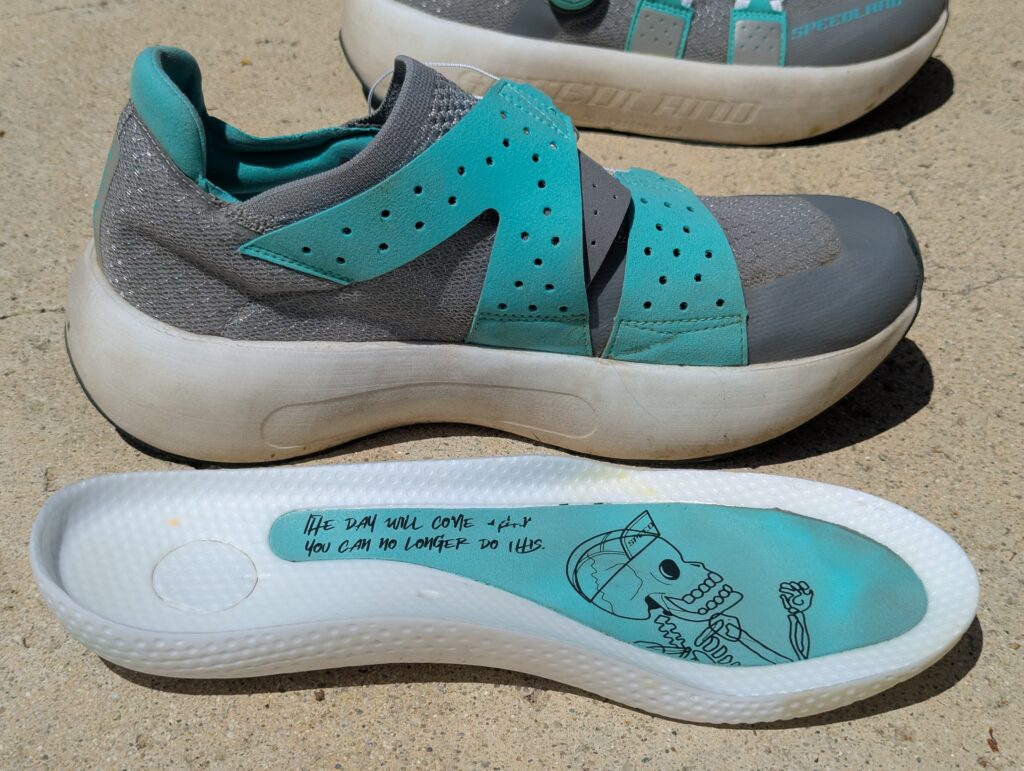
To further reduce weight over the GS, the RX platform uses only a single BOA dial. This is probably a reasonable tradeoff, but it may irk people who want a bit more granular control over the fit of the shoe. I think I’d have preferred double dials, but I also never really found the fit wanting. As someone who raced Ironman with elastic laces, I am not generally too picky about fit on race day. For training, I do like the keep the lacing over the arch tighter than the forefoot, which is not possible with a single dial. I think the simplicity possibly makes up for it, and since a lighter shoe – all things being equal – will be faster, I think it was a reasonable design decision. It’s never one thing that adds on a ton of weight, but rather the sum total of every area where you could have chosen to save a bit of weight rather than taking the heavier, slightly more complex route. I will say, ultimately, having an 8oz shoe with this level of stability is amazing. And I know that was the result of challenging decisions about tradeoffs. Even if I’d have liked a second dial, I also really know I like having a light shoe. The single boa is paired with the same dual “strap” PerformFit (BOA-specific) upper, it’s just that the one boa threads through both straps.
Midsole & Plates
The uncompressed SCF (Super Critical Foam, aka super foam) midsole offers a lot more bounce than the compressed foam of the GS, but it also can feel overly soft, especially when running without a plate. The plate in the GS provides some nice pop, but it doesn’t fundamentally change the shoe. The RX is absolutely defined by not only whether you use a plate, but by which plate you use. The race plate for the RX is a massive departure from the plate in the GS. The GS plate was designed to be especially flexible, especially in torsion to keep it from affecting ground feel on trails. The lateral and torsional flexibility of the Carbitex plate is quite remarkable. And it’s especially flexible – offering almost no resistance – when pushing the plate down (flattening it). The plate really only responds to provide the pop we expect of a carbon plated shoe when it’s flexed along the primary axis. The plate does not want to be flexed “upward” – instead storing and releasing energy along the sagittal plane (front-to-back). Preserving flexibility in the coronal plane (side-to-side) is critical for a trail shoe. And it’s a big part of why it took so long (along with the risk of ankle injuries with high stack foam) that it took carbon plates so long to come to trail shoes and why they still aren’t yet the norm.
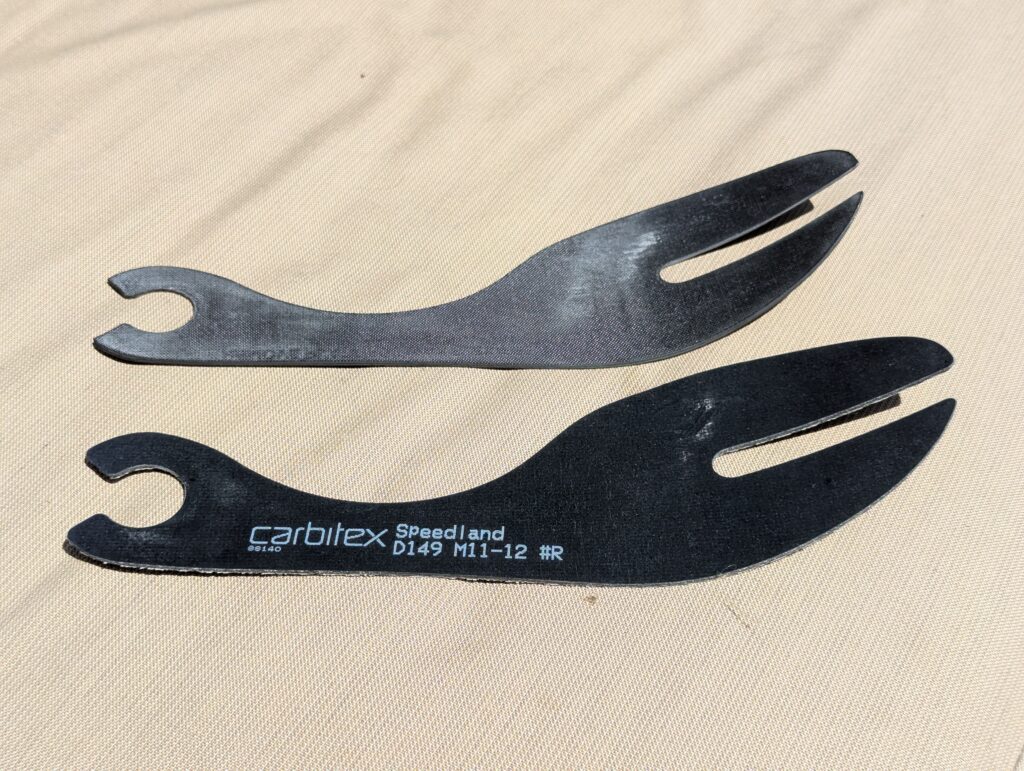
The plate designed for the RX is a lot stiffer in every direction. This comes with some tradeoffs. It’s not great for easy running. This is a plate that really wants you to be running fast. It wants to propel you. I found this plate put a fair amount of stress on my peroneals – the muscles on the front of the lower leg. In particular on the lateral side. The stiffness of this plate – especially in a shoe that offers a lot of stability – can feel overly rigid. This plate is really great for fast running. I think it could be the right plate for Ironman, but I think I’d need to do some longer progressive runs to really gauge how it felt running fast on tired legs.
With no plate, the shoe is fantastic for easy runs. You don’t get the impulsive pop of a carbon plate, but it also doesn’t make you feel like the shoe wants to run faster than you do. It’s a bit on the spongy side, but it’s really great for soaking up shock. For runs like this, I prefer to run on trails, but it’s nice to be able to go for an easy run on the road and not get beat up. And the no plate option offers that. This shoe really is great to just cruise in without a plate. I generally prefer firmer shoes, so I didn’t love longer runs without a plate, but the shoe is certainly very capable.
I tried the plate from the GS on a lark. I had pretty clearly settled on plate being good for fast and no plate being good for easy, but I was still unsure of what was best for kind of mid-pace tempo runs. The new plate really is just a lot stiffer, and I could feel the additional stress that it put on my ankles, as research about plated shoes shows. I wondered if I could reduce that stress a bit and still get the pop I was after with the GS’s Carbitex plate. And I think I found it. The GS plate is really quite remarkable in terms of how it offers so much flexibility in torsion and laterally while being so stiff and responsive along the primary axis. It’s really a remarkable piece of engineering. While it’s not the plate Speedland recommends, it is, in my opinion, the goldilocks options for this shoe. And I think it’s what I’d probably recommend for most triathletes. If you are looking to run sub-3hr, then the performance plate is probably worth it. But for most triathletes, I think the trail plate is just a bit better as I think it’ll be easier on tired lower legs. While spending an extra $30 on top of a $300 shoe (the RX shoes include the carbon plate, unlike the trail shoes where it’s optional) is a big ask, to me it’s definitely worth it. Also remember the plates, unlike the shoes, will not wear out and if you are running in Speedlands off road you can use the plate for trails as well; I absolutely would not take the road plate on the trail, but the trail is superlative on the road.
Competing In A Crowded Field
Unlike with the GS, there’s a ton of competition for super shoes on the road. The GS is, objectively, an extremely good shoe. But what makes it truly remarkable is how much better it is than other trail shoes. It gives you sure footed performance and a ton of pop in a light, stable shoe. Really it’s only competition at the time was the Hoka Tecton. More competitors will follow, but the sum total of Speedland’s features are truly unique.
The RX faces much, much more serious competition from Nike, ASICS, Puma, Hoka, Adidas, Brooks, New Balance, etc. I love my ASICS MetaSpeed Sky. I will say that the RX is not, objectively, a better super shoe than the ASICS. But I think it may be a better Ironman shoe, especially for people running over 3 (or 4) hours. The reason is the stability the RX offers with its low-set foot position. Being down “in” the shoe matters a lot when your legs are tired and form is going. Even people who are not over pronators can become dramatic over pronators in the back half of an Ironman marathon. And super shoes meant for sub-2:20 marathoners who weigh as much as a whippet just are not designed with stability and support in mind. The RX isn’t quite a road GS, but it does share Speedland’s fundamental design commitment to stability as a primary goal of shoe design. The wrap around straps of the BOA and the positioning of the foot just make this a shoe that keeps you stable. Even though I haven’t been running a lot lately – less than 20mi/week – I felt my form really held up well during longer runs in the RX.
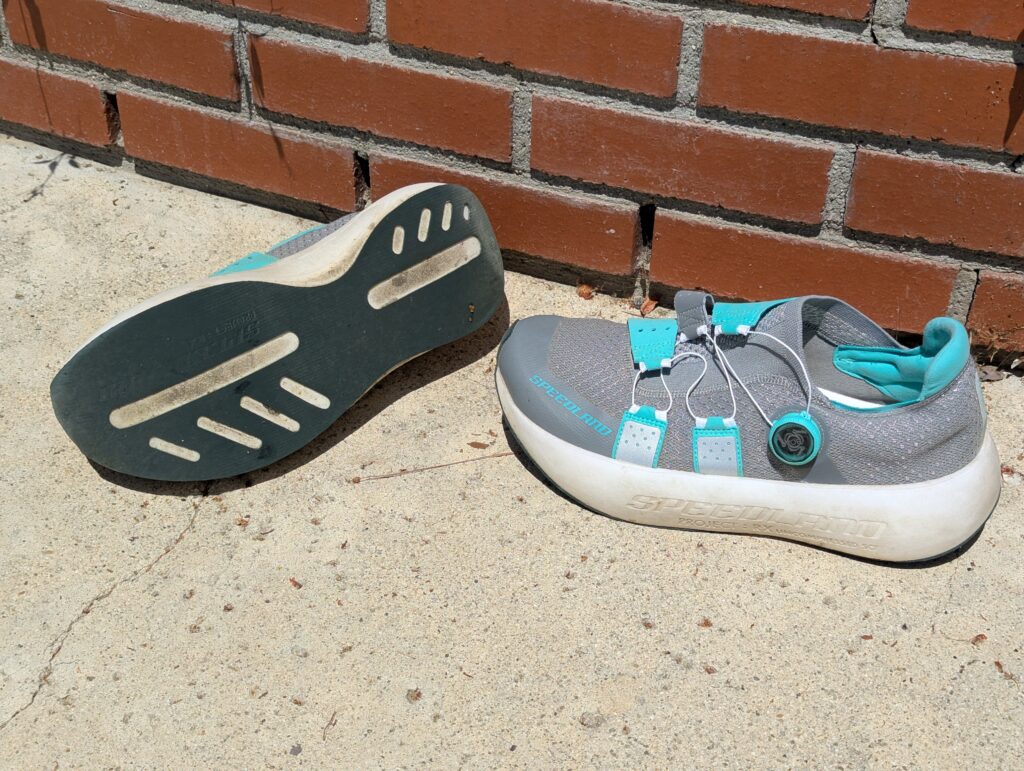
While it isn’t quite as critical as the actual structure of the shoe, the BOA dial is also a huge win for triathletes. Foot swelling during an Ironman is a real thing. And being able to very quickly adjust the fit using the dial is fantastic. I suffered through not being able to adjust my shoes on race day, but if it had only been a few seconds the make a couple clicks with the BOA, I might have taken advantage. When I was sponsored by Zoot we did some experimentation with BOA shoes for exactly this reason. The dials never worked quite right with an upper that wasn’t designed for it – this predated BOA doing their PerformFit upper spec – and the Dyneema laces are also much more comfortable than the steel wires. But I definitely recognized the potential from racing in BOA dialed cycling shoes. The ability to easily find tune fit and overall comfort always mattered more to me than a slightly faster transition.
The stability of this shoe really is the thing that sells it. It was noticeable how my glutes were more sore after long runs while my lower legs felt pretty good. And there was just this sense of landing “square.” I just always felt very solid on the ground. Some of what makes super shoes feel fast is that they are designed for quick turnover. But the RX felt really good at that tempo rhythm. I didn’t find that sub-6 minute miles came quite as easily as with my ASICs but I felt like the 6:30 miles were pretty similar though with that same sense of surefootedness that I have gotten so used to running in the GS trail shoes.
There’s no denying that super shoes offer a remarkable performance boost. There’s pretty clearly a solid 5ish min drop in Ironman marathon times at the pro level that corresponds exactly to when these shoes became the norm. But for age group athletes who aren’t running a 2:45ish marathon, I think it is less clear than the super shoes meant for world records are offering quite the same benefit for a typical Ironman marathon. The super foams certainly help reduce leg shock. But these are not generally shoes that are designed with a high focus on stability. The RX changes that. If you want a shoe to carry you through the back half of an Ironman marathon – a shoe that will help you to run all the way to the finish line – the RX is worth looking at.
The RX:FPY is available from RunSpeedland.com for $299 including the RX-specific carbon plate. The Carbitex trail-specific plate is available for #35. Starting with the next colorway – RX:CCD and trail-specific GS:CCD – Speedland shoes will also be available from RunningWarehouse.com. Speedland shoes are identified by Model-abbreviation : Style-abbreviation; there’s no difference between RX models other than colorway; the FPY is a stylistic collaboration with Speedland sponsored athlete Don Reichelt, while the CCD is an homage to the Cocodona 250 ultra.
Specs
- Weight: 8.5oz (US9)
- Approximate heel-toe drop: 7mm
- Total stack: 33mm / 40mm




Thanks Jordan. This is a great review of the product. I’ve tested the original GS:PDX and the GS:TAM. Kevin and Dave at Speedland are awesome. True shoe dogs who are entirely performance focused. I can’t wait to get my hands (dare I say feet) on a pair of these (which will likely be my shoes for IM Lake Placid in July).
Thanks Jordan - great review and summary of Speedland. Having run in both the GS:TAM and now the the RX:FPY I think Jordan’s review is a great summary of where this fits for an age group triathlete. I love running in the RX:FPY - it just feels solid for putting in miles - you might not get the same exact pop as Nike but I’m not running at sub 3 hour marathon and after a long ride these are the perfect combination of fast and stable. I have run in the rain and I can report there is no issue with them slipping on the road but the combination of being “in” the midsole and the upper means they don’t drain well so you do accumulate a lot more water in your shoe compared to other running shoes.